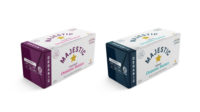All Things Organic session says organic industry at critical crossroads
The organic opportunity has never been greater, but realizing that opportunity will not be easy. A group of organic thought leaders looked into the future of the organic industry and agreed that major challenges need to be overcome for organic to fulfill its potential and move significantly beyond its position of nearly 5% of the U.S. food supply.
"The next 3-5 years are going to be mission-critical for what happens in organic 15 years from now," says Melissa Hughes, general counsel of organic dairy cooperative Organic Valley, La Forge, Wis., and president of the Organic Trade Association (OTA) board of directors, Washington, D.C. "We have to figure out how to meet the needs of organic farmers now so they will be able to meet the needs of the future."
Hughes was part of a panel discussion on the current and future state of organic, which kicked off OTA's 2-day All Things Organic educational conference program at the Natural Products Expo East show in Baltimore, Md. Moderated by OTA executive director and CEO Laura Batcha, the panel also included Danielle Nierenberg, founder of Food Tank, New Orleans, La., and Lynn Clarkson, president of Clarkson Grain, Cerro Gordo, Ill.
The panel saw demand for organic products continuing to grow in the future. Several factors play into this scenario—a growing awareness of the importance of eating healthy food, an increasing desire to know more about the source of our food and how it was produced, a generational shift in consumption and buying trends, and heightened concern about the environmental impacts of the practices of large-scale conventional and industrial agriculture.
The U.S. organic sector has exploded in the past two decades. Sales of organic in the United States broke through another record in 2014, totaling $39.1 billion, up more than 11% from the previous year, according to OTA's latest survey. Organic demand now cuts across all regions, all ages and all income groups.
New information on the U.S. organic agricultural sector released by the U.S. Department of Agriculture (USDA) showed that sales of organic crops and livestock at the farm-gate level reached $5.5 billion in 2014, up 72% from 2008. In the third survey of U.S. organic agriculture since 2008, USDA also said the industry shows potential for growth, with some 39% of organic farmers surveyed reporting that they intend to increase production over the next five years.
A resource-constrained environment
The fact that a good portion of organic farmers intend to boost their production is welcome news for the sector. Panelists in the All Things Organic session said not having enough organic supplies to meet demand is the No. 1 issue in the rapidly growing organic industry.
"At the rate organic is growing, organic demand could double in six years," says Clarkson. "By 2030, organic could be 10% of the U.S. food supply, but how are we going to do that if we lack the raw organic materials? We need to have more organic production in the U.S."
Clarkson noted that despite higher prices for organic crops than for conventional, American farmers have still been slow to switch to organic. Because of that, the United States is importing organic soybeans and corn and other organic ingredients, and is "turning over its best markets to foreign suppliers."
"So much of the organic sector is living in a resource-constrained environment now," says Hughes.
Hughes called on the organic industry to begin building the foundation to enable a supply cushion that could fill future demand and guard against crop losses caused by extreme weather events and climate change.
Shift in organic buying habits
Panelists noted how patterns in organic buying have changed significantly over the years. Organic is no longer mainly bought at farmers' markets or specialty food stores, and traditional supermarkets and the big box stores are now huge players in the organic sector.
"New organic buyers are flexible about where they buy organic," says Batcha. "Millennials have no problem going to the farmers' market for organic produce in the morning, then driving to their favorite big box store later to pick up paper towels, and while they're there, buy some organic cereal."
Another change in food buying is buying food online, adds Nierenberg, who says, "it will be exciting to see in the next 15 years how organic can reach more consumers, and how it can scale not just up but out."
Looking for a reprint of this article?
From high-res PDFs to custom plaques, order your copy today!







